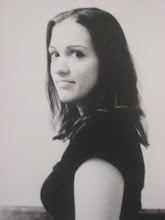
“The aim of this music is not to display the fine voices of the chanters, or to entertain the congregation, or to evoke aesthetic experience…. This music is, in the first place, a means of worship and veneration; and in the second place, a means of self-perfection, of eliciting and cultivating man’s higher thoughts and feelings of opposing and eliminating his lower, undesirable ones.” –Constantine Cavarnos,
Byzantine Sacred Music Music is a very important part of my religious life. In the Orthodox Church, theology and the arts are inseparable; there is not a sharp distinction in its worship between the spiritual and the aesthetic. One becomes aware of God's presence through the senses, in the experience of beauty. The Divine Liturgy is the anticipation of the time when the whole world, not only man, is transfigured. It is also meant to bring about the awareness that the Kingdom is present now and that we may participate in it.
Music plays a significant role in the Liturgy. Most of the Bible is phrased in a way meant to be sung, so Scripture is presented mainly in the form of chanting and hymns. Choirs as a distinct entity are in place, but they are not meant to replace congregational singing; rather, they are to aid the prayers of the people and to lead the format of the service.
The Liturgy most commonly used is that of St. John Chrystostom. The Liturgy of St. Basil is used less often throughout the cycle, and the Liturgy of the Presanctified Gifts is used during Lent. From week to week nearly everything is the same, except for the Prokeimenon/epistle, Gospel reading, and hymns that change according to the day of the church year. (For a more detailed description:
http://orthodoxwiki.org/Liturgy).
The American Orthodox Church is rather unique in its musical tradition. As I said in my first post, the style of singing can vary, depending on the jurisdiction. In the OCA branch, pieces are taken from many traditions—Russian, Romanian, Greek, etc.—and are adapted to suit the English language while still retaining the original musical character. All of the music is vocal without instrumental accompaniment (unless you count the ringing of bells outside the church and the sound of a swinging censor).
I suppose you could say that my experience with Orthodox music influences the way I view and experience other music, to some extent. I believe that all music is called to be a participation in the divine, regardless of the style. I enjoy classical music, rock, and any other genre by their own merit, as much as the next person. I do, however, regularly try to test them against the standard of whether they are spiritually constructive or not.
“The books or the music in which we thought the beauty was located will betray us if we trust to them; it was not in them, it only came through them, and what came through them was longing. These things—the beauty, the memory of the past—are good images of what we really desire; but if they are mistaken for the thing itself, they turn into dumb idols, breaking the hearts of their worshippers. For they are not the thing itself; they are only the scent of a flower we have not found, the echo of a tune we have not heard, news from a country we have never yet visited.” –C.S. Lewis



 “The aim of this music is not to display the fine voices of the chanters, or to entertain the congregation, or to evoke aesthetic experience…. This music is, in the first place, a means of worship and veneration; and in the second place, a means of self-perfection, of eliciting and cultivating man’s higher thoughts and feelings of opposing and eliminating his lower, undesirable ones.” –Constantine Cavarnos, Byzantine Sacred Music
“The aim of this music is not to display the fine voices of the chanters, or to entertain the congregation, or to evoke aesthetic experience…. This music is, in the first place, a means of worship and veneration; and in the second place, a means of self-perfection, of eliciting and cultivating man’s higher thoughts and feelings of opposing and eliminating his lower, undesirable ones.” –Constantine Cavarnos, Byzantine Sacred Music 


